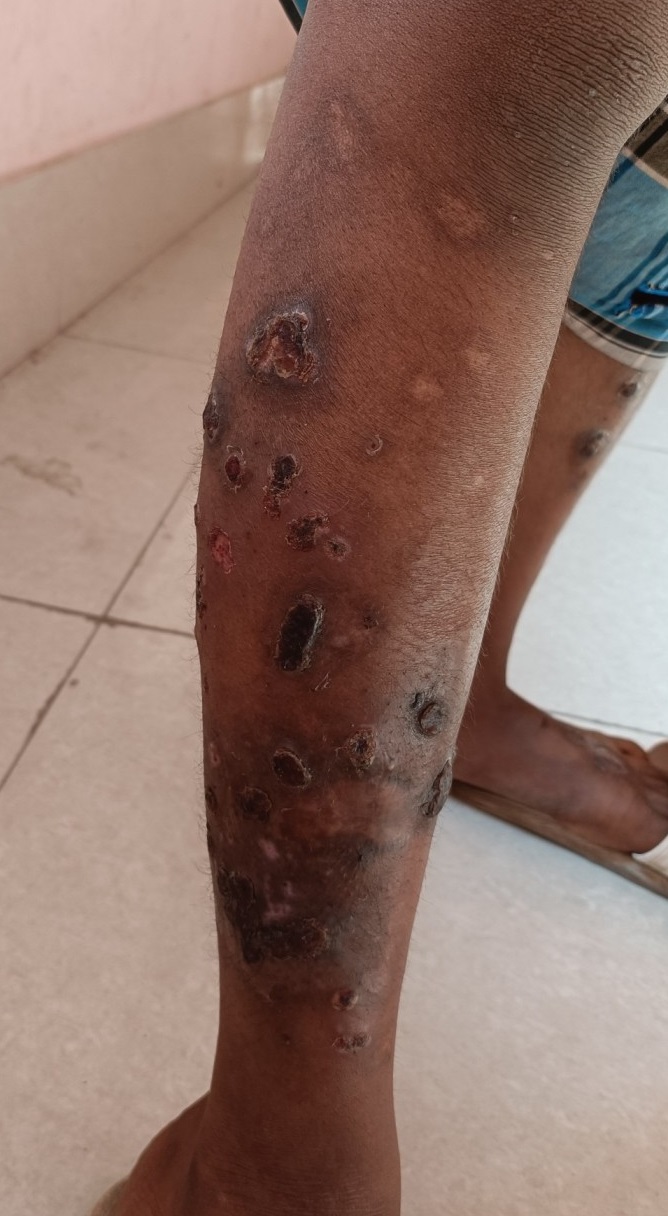Ecthyma gangrenosum with a coinfection of methicillin-sensitive staphylococcus aureus and streptococcus pyogenes: a case report
Keywords:
Ecthyma, Staphylococcus aureus, Streptococcus pyogenesAbstract
Introduction: Ecthyma gangrenosum (EG) is a cutaneous infection characterized by gangrenous ulcers with erythematous borders seen in immunocompromised as well as immunocompetent individuals. Although Pseudomonas aeruginosa is the commonest pathogen isolated, several other bacteria and fungi contribute to the pathogenesis of EG. Identification of the microorganism is very essential to initiate early empirical antimicrobial therapy.
Case presentation: We present a case report of a 13-year-old boy with multiple recurrent ulcerative lesions in both lower extremities for the past 1 year. His blood parameters showed signs of inflammation but was negative for aerobic blood culture, suggesting absence of underlying bacteraemia. There were no features of immunosuppression. On examination of pus sample, Methicillin Sensitive Staphylococcus aureus and Streptococcus pyogenes were isolated from the ulcerative lesions. Amoxicillin- Clavulanate and Doxycycline was advised for 2 weeks along with surgical debridement of the lesion followed by aseptic dressing. Patient showed complete resolution after 2 weeks.
Discussion: Staphylococcus aureus and Streptococcus pyogenes were the causative agents in this case, suggesting a polymicrobial association of EG besides Pseudomonas aeruginosa. Underlying bacteraemia or any other immunodeficiency is usually seen in a case of EG, however there are cases reported where cutaneous manifestations show predominance.
Conclusion: A prompt diagnosis of EG is essential because there are instances when it has proven to be fatal. Ruling out any immunodeficiency disorders and underlying bacteraemia is of vital importance. Administration of proper antibiotic coverage (gram positive or gram negative) along with debridement and regular dressing can help in limiting the spread of infections and thus improving patient outcome.

Additional Files
Published
How to Cite
License
Copyright (c) 2024 Rohon Das Roy, Dipmala Das, Subhayan Das Gupta

This work is licensed under a Creative Commons Attribution-NonCommercial 4.0 International License.
